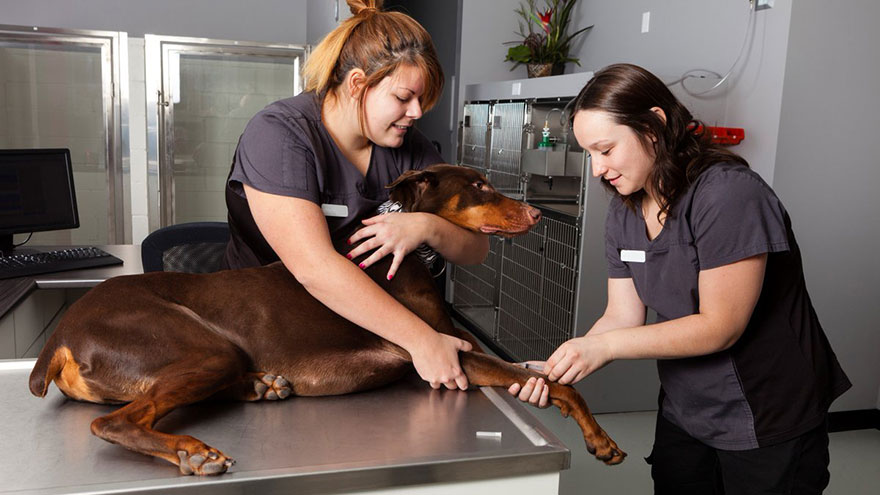Sub-Q Therapy in Dogs for Kidney Failure
“Kidney failure” is a frightening term, and though your dog’s kidneys are compromised and not functioning efficiently, they still work and produce urine — they just aren’t filtering waste products as they should. Subcutaneous fluid therapy helps a dog in kidney failure by keeping him hydrated, providing additional electrolytes and flushing the toxins from his kidneys. Though it may seem daunting, it’s a procedure you can do in the comfort of your home.

Basic Fluid Therapy Rules
The thought of sticking your dog with a needle may give you the shivers or cause you to panic, however administering subcutaneous fluids is fairly easy. Your vet can walk you through the process to show you the specifics of the treatment. There are a few important rules to keep in mind when you administer fluid therapy to your dog. Don’t assume more is better when it comes to giving your dog his fluids; instead, give your dog the amount of fluid your vet recommended. As well, be sure to keep the needle and its protective cap sterile to avoid introducing contaminants into the needle site. Take care to discard used needles correctly — they should never be used more than once.
Getting Comfortable
Most dogs respond well to home-administered fluid therapy. Your dog will take his cues from you, so relax when it’s rehydration time and use it as a chance to have some quiet one-on-one time with your dog. Ideally, the fluids should be at body temperature, or at least room temperature. To warm his fluids, run the bag under warm water and test the fluid on your arm to ensure it’s not too hot or cold.
If your dog has a favorite chair or room, choose that as your “medical area,” using a door, curtain rod, plant hanger or other method to hold the fluid bag. Some family snuggles may distract him when it’s time to insert the needle. He’ll likely appreciate pets and soothing talk during his fluid administration.
Keep Him Eating and Drinking
Fluid therapy is usually one part of the kidney failure treatment protocol. Elevated phosphorus levels in the bloodstream associated with renal failure often result in a depressed appetite. If your dog isn’t interested in eating, try offering him canned food, lightly warmed, to goose his appetite. Phosphorus binders also may help by binding excess phosphates in the intestinal tract so they don’t enter the bloodstream.
Discuss an appetite stimulant with your vet if your dog refuses food. Depending on your dog’s condition, he also may require a special diet that’s low in phosphorus, sodium and protein. Don’t forget to provide him plenty of fresh water to keep him hydrated between fluid therapy sessions.
Cautions for Subcutaneous Therapy
When you give your dog fluids, avoid inserting the needle in the same spot repeatedly to avoid developing an abscess at the needle site. If you notice a hard, painful lump that’s warm to the touch, contact your vet. As well, call the vet if the skin around the needle is tight. If the fluids are cloudy or discolored, discard them because it indicates the fluids are contaminated with bacteria, which can cause an infection beneath your dog’s skin.
You Might Also Like :: Raw Food Diet for Dogs With Kidney Failure

